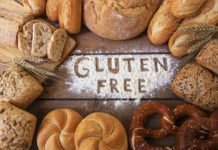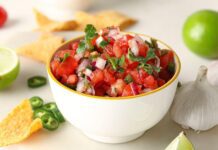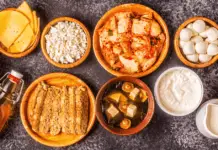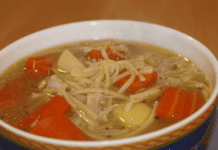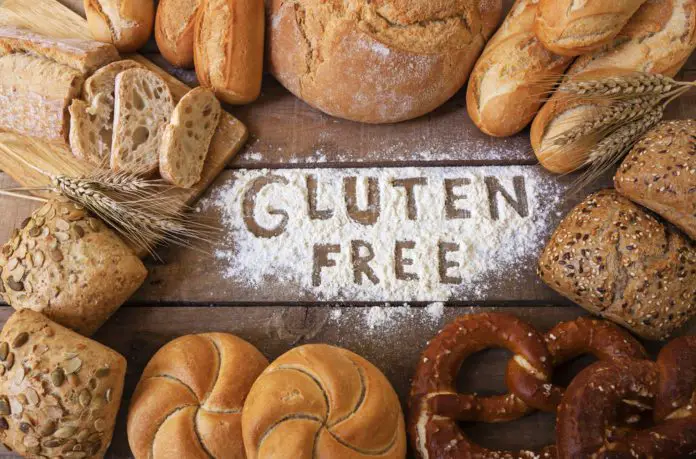People have many reasons for going gluten-free. Those suffering with Celiac disease do so to heal from the harmful effects gluten has on their gastrointestinal system. Others like myself may have a gluten sensitivity that causes their autoimmune disease to flare up. Still others do so in response to information they’ve learned about gluten. This article provides gluten-free life hacks to make the transition to gluten-free easier.
This post contains affiliate links. If you make a purchase through a link, I may receive a small commission, at no cost to you.

Years ago I jumped head first into the gluten-free life without first learning what it entails. As a result I experienced a great deal of frustration initially at the lack of food options. This was further compounded by the fact that I have multiple food allergies and sensitivities.
I’ve learned a lot in the years following. Below are my top 10 gluten-free life hacks.
Table of Contents
1. Never assume a product doesn’t contain gluten just because “wheat” isn’t listed on the allergen label
Thanks to the Food and Drug Administration (FDA) food labeling law, manufacturers are required to list whether the food in question contains any of the top 8 allergens (milk, eggs, tree nuts, peanuts, shellfish, fish, soy and wheat). Although wheat is a common source of gluten, it isn’t the only grain that contains this substance. Barley, rye, spelt, and farina are just a few other grains that contain gluten. Even grains like oat that don’t naturally contain gluten can become contaminated during the harvesting and manufacturing processes. In addition, there are many hidden sources of gluten including condiments, alcohol and soy sauce. That’s why you should always look look for the “Gluten-Free” label on all canned and packaged products.
2. Familiarize yourself with the different names for wheat
If you’re extremely sensitive to gluten like I am, then you may want to stick to foods that have the gluten free declaration on the label. However, if you like living on the wild side, or if gluten-free is unavailable, arm yourself with knowledge so you can make an informed decision. Anything containing the following substances should be avoided: binders, fillers, thickening agents (or thickeners), cereals, bran, bulgar, spelt, couscous, matzah (matzo), durum and starch (including modified food starch).
3. Beware, some gluten sensitive and celiac sufferers are also sensitive to other grains
Because of molecular mimicry the body’s immune system can mistake proteins in other grains for those found in gluten. This causes the body to create antibodies which trigger the inflammatory response. Gluten-free grains can also be cross-contaminated with gluten when grains are harvested and stored.
You May Also Want To Read:


4. Replace lost nutrients including fiber
Going gluten-free isn’t something to take lightly. Foods that contain gluten like cereals and whole-wheat bread are fortified with vitamins and minerals. You’ll want to replace this lost nutrition with other sources. Vitamins A, E, K and folate can be obtained from eating green leafy vegetables. Meat, eggs, poultry and dairy products are a good source of Vitamin B12. One way of adding some of the fiber back into your diet is by including flaxseed in your gluten-free recipes. While food is always the best source of vitamins and minerals, supplementation may be necessary if you’re not getting adequate amounts. I consumed dark green leafy vegetables several times per week. But if my hair and skin were any indication I still had a deficiency so I started supplementing with gluten free vitamins.

Pure Encapsulation – Nutrient 950 without Copper and Iron, Gluten-Free, Non-GMO & Hypoallergenic
5. “Gluten free” doesn’t necessarily mean “healthy“
Gluten-free products are usually situated in the “healthy” section of your local grocer, next to organic products and “natural” vitamins and supplements. So it’s easy for our brains to make the subconscious association…gluten-free equals “healthy. This is not necessarily the case. While there are some healthy gluten-free products, many items are loaded with sugar, salt and calories. In some instances, even more so than conventional products. A gluten-free diet can be healthy, but like anything else, wise choices must be made. Take time to read the labels and remember, a gluten-free cookie is still a cookie even if it’s in the healthy section.
You May Also Want To Read:
Soup for Health: 8 Reasons Why Soup Is Good for You
The Best Gluten-Free Chicken and Dumpling Soup
30+ Amazing Gluten-Free Soup Recipes to Warm Up Your Fall and Winter
How to Make a Versatile Gluten-Free All-Purpose Flour Blend
6. Pack a lunch when traveling
You’d be surprised to learn how much gluten permeates the foods we eat. From bread, prepared foods and soy sauce to salad dressing, mayonnaise and ketchup, there’s no escaping it. My first road trip after going gluten-free was a rude awakening. Between avoiding gluten and other foods I was sensitive to, there was absolutely nothing I could eat at the rest stops. Now when I travel I’ll pack a chicken or tuna salad or leftovers from the night before that I can microwave when I reach my destination.

7. Plan ahead when eating out
Whether spending a night out on the town or traveling on a well-deserved vacation, mealtime will go a lot smoother if you plan ahead. Call your favorite restaurants or check out menus online. Many restaurants either have a dedicated gluten-free section or they’ll mark selections that are available as gluten-free. “Find Me GF” is an app you can use (also available here) to search for gluten free dining options. The app can use your current location or you can enter your desired destination. Decide whether you want to list only dedicated gluten-free establishments. For an annual fee you could use the premium feature which will show the most celiac-friendly options. Select a category from multiple options including breakfast, lunch, pizza, Italian food, Chinese food, dessert, burgers, chains, healthy and more.
8. Add Xantham gum to recipes as a “binder”
My first few experiences with gluten-free baking were a disaster. I thought I could just substitute the all purpose flour in recipes with my gluten-free flour of choice. I soon came to understand the role of gluten. It’s the “glue” that holds baked goods together, giving bread and cakes their springy quality. Fortunately, Xantham gum is a common binding agent in gluten-free baking. Some store-bought flour blends already contain Xantham gum, in which case, you don’t need to add any more. But when making your own flour blend, or when using a store-bought variety that doesn’t contain Xantham gum, you’ll need to add some to your recipe. The rule of thumb is to use 1/2 teaspoon for every cup of flour.
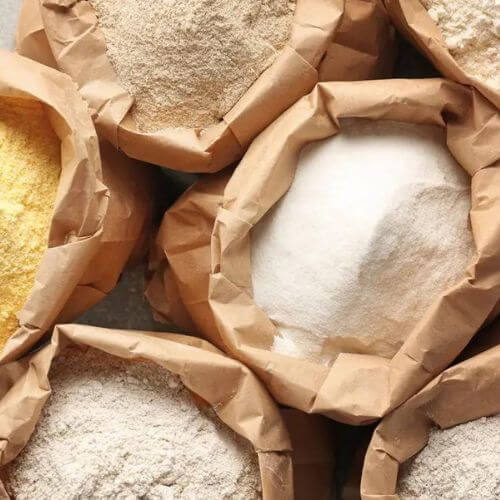

9. Experiment with other types of flour
There’s no shortage of variety when it comes to gluten free flour. If you’re looking for flour that’s high in protein, amaranth, sorghum or buckwheat are a few varieties you can try. If fiber is what you’re looking for, brown rice, chickpea and oat flour are at the top of the list. Some flours have a naturally nutty flavor like almond. Beware though. Not all flour has a 1:1 ratio to all purpose flour.
10. Make your own gluten free flour mixture
In the early days of the pandemic, empty grocery store shelves became the new norm. So when I found myself without my trusted brand of gluten free flour I had to get resourceful. Armed with a flour blend recipe I set out to bake a family favorite in my household. The end result was a moist and spongy pineapple upside down cake to die for. In that moment I realized that not all gluten-free blends were the same. Although my store-bought blend made perfect pancakes it left my homemade cakes and cookies crumbly and feeling gritty. What I like about this DIY flour blend is that it’s made with brown rice flour so I’m getting fiber with each serving.
The journey to a gluten-free lifestyle has its challenges. The more you know, the easier it will be to navigate this new terrain.









